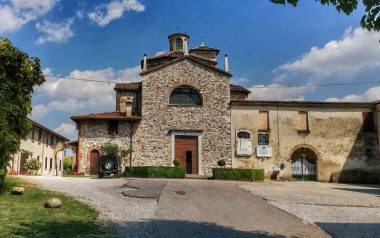Church St. Maria called Madonna della Scoperta
At the end of the 12th century this area was marked by woods, marshes and canals; it can be deduced from the documents, in particular from a survey of 1231 on the assets of the monastery of Santa Maria. Venzago is remembered in 970 as Villa Vinzago of the Mantuan committee. In its territory there were, in the mid-twelfth century, two churches: San Paolo and Santa Maria, called “Fontana coperta”.
The church of Santa Maria, known as “Madonna della Scoperta” from the beginning of the 16th century, is attested for the first time in 1163, when Bosone di Cavriana invests the church of a canal with the possibility of using its water for a mill. From the documents of the 12th century we can deduce its dependence on the oldest church of San Paolo di Venzago and then from the monastery of Santa Maria di Manerbio. The church of Santa Maria della Scoperta now appears in the forms of the modern age, with a large dome contrasting with the small semicircular apse in an uncertain work, which became the niche of the subsequent large rectangular apse. The apse, heavily restored and therefore difficult to read, has however an uncertain vestment, similar to that of the end wall, devoid of angular reinforcement stones up to a slightly higher height. It also has side pilasters near the end wall and a central window can be glimpsed. The high frame with sawtooth bricks, completely similar to the crowning of the end wall, dates back to 1602. Although remodeled at the moment of raising it, it is possible to cautiously advance the hypothesis that the small semicircular apse is pertinent to the church remembered in the mid-12th century, an ante quem term that for now has no further possibility of clarification. The name “Madonna della Scoperta” seems to derive from the discovery of a perfectly preserved painting of the Madonna, which had been lost during the destruction by some soldiers at the beginning of the 13th century of the convent of S. Maria di Fontana Coperta
Historical sources: G.P. Brogiolo

